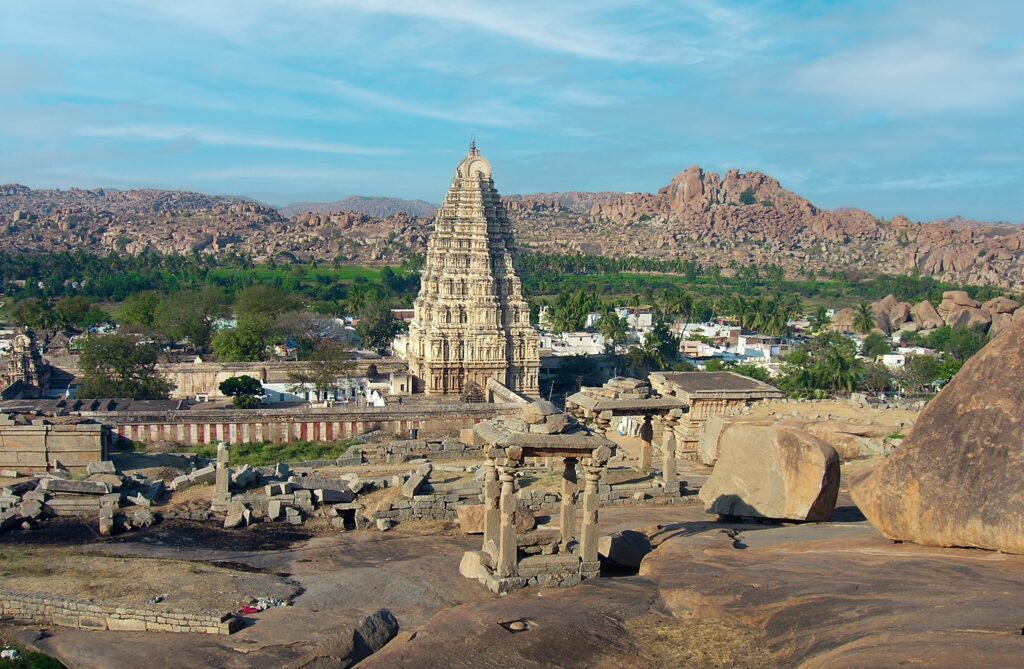Being a person who is always obsessed with history and facts, it was a right decision that I took to travel to the all time famous Vijayanagara. The things I got to see and know were fascinating and despairing at the same time which I personally felt like sharing as a piece of blog that would be an eye opener to all the readers. To be very precise, the city was established in 1336 by Harihara I and Bukka Raya I, and was famous for its prosperity and rich cultural heritage. It was after so many invasions by different empires that it still managed to retain its heritage. Vijayanagara, which is also known as Karnata kingdom, means “City of Victory” and to the best of my knowledge, it was a glorious one.
As we travel through the entire city, the part which enthrals us will be the location that is made more beautiful by the presence of Tungabadhra and the empire’s legacy extended with its monuments all over Karnataka. As you might be knowing, the best one is in Hampi, the capital of the empire. Notably the architectures are built in South Indian and Central Indian styles, the great combination which inspired and brought a lot of innovations to the Hindu Temple construction.
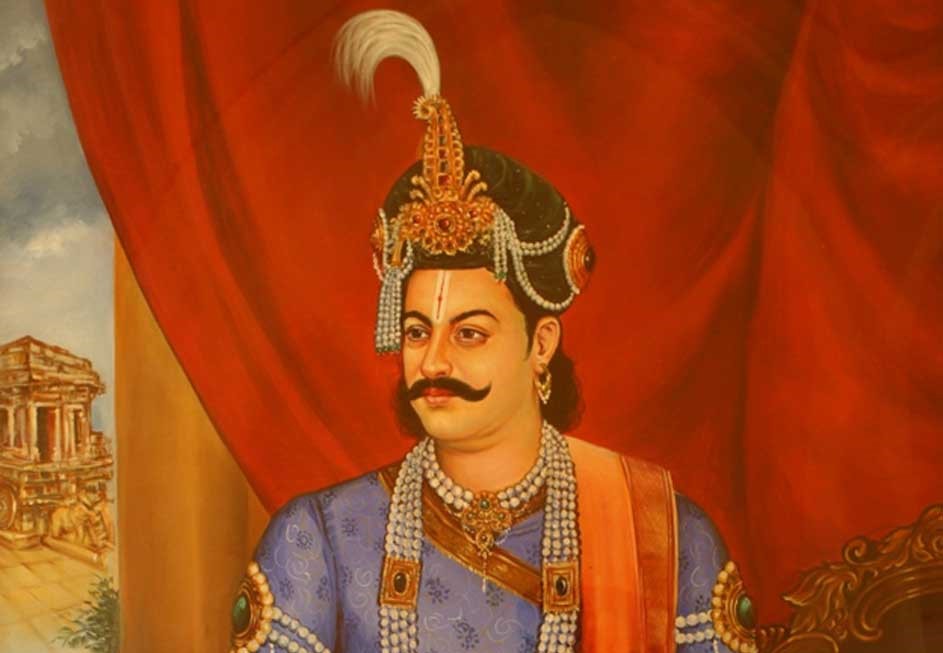
Sri Krishnadevaraya (A. D 1471-A. D 1579) was the well-known King of Vijayanagara who was popularly known as “Abhinava Bhoja” . As many of you might have, I felt really confused by the name and it was after a small research that I got to know the reason behind the same. He was named so because of his keen interest in different fields like literature, education, art, and technology.
As we know already, the people of that era were endowed with high moral values. Historical records which I referred also mentions about their hospitality and honesty. Their exemplary behaviour serves as an amazing model for today’s people. It is said that the Vijayanagara kingdom was so prosperous that precious goods like gold, silver, diamonds and other gemstones were sold in the market like common wares! The people would also leave their precious wares outside without the fear of thieves. Is it possible for us to even think about the situation today? This clearly reflects the law and order and also the high moral values of the people.
I hope you all remember about the despairing facts that I mentioned initially. Despite all the achievements and triumphs, the great kingdom of Vijayanagara came to an end with Aliya Ramaraya when he lost the Battle of Talikota and the kingdom was thoroughly massacred by the invaders.
Here, as you see is a small glimpse of the Vijayanagara Empire. Surprisingly, Hampi still survives even after so many invasions as a reminder of a lost empire. It was declared a UNESCO heritage site. Now, it is a hotspot for the tourism industry and stretches from the borders of Hospete to Anegundi. The significance of the destination is included all around through the itinerary of Indian heritage.
What is Hampi famous for?
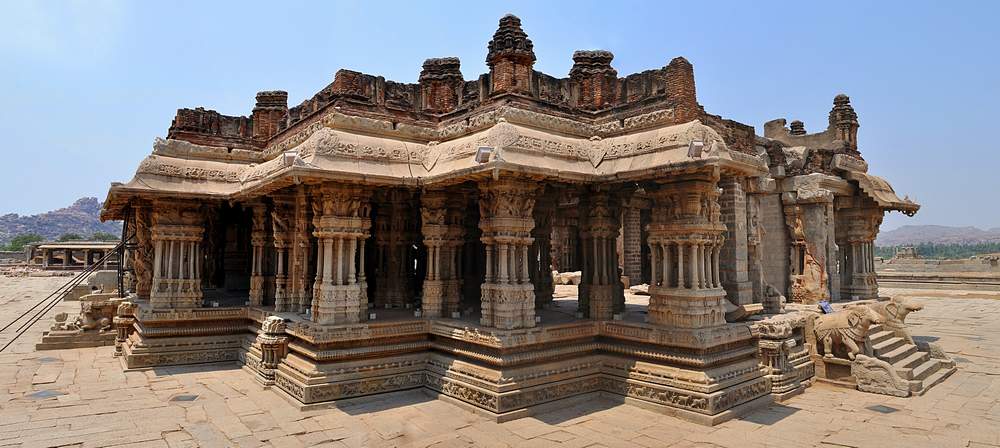
- 56 Melodic columns at Vittala Temple: The above structure is a marvelous blend of music and architecture. When the pillars are touched they seem to produce rhythmic sounds.
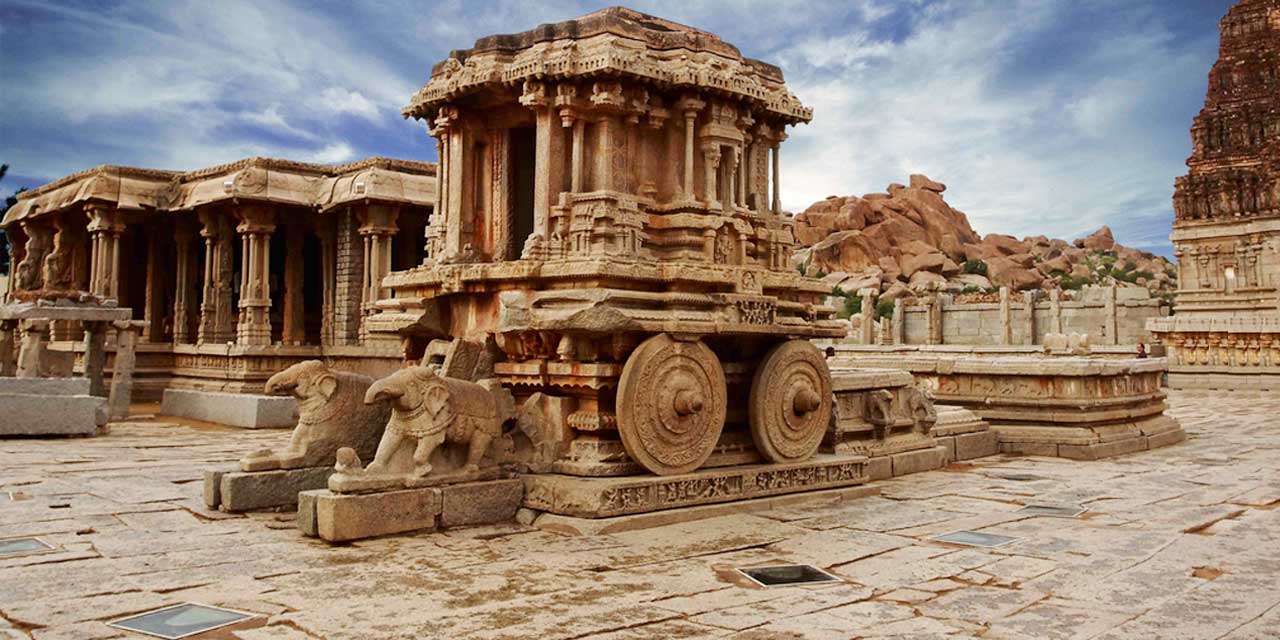
- The Stone chariot at Hampi: This is inspired by the Stone chariot at Konark, Orissa and is one of the most famous architectural marvels of this kingdom. It is declared a UNESCO Heritage site.
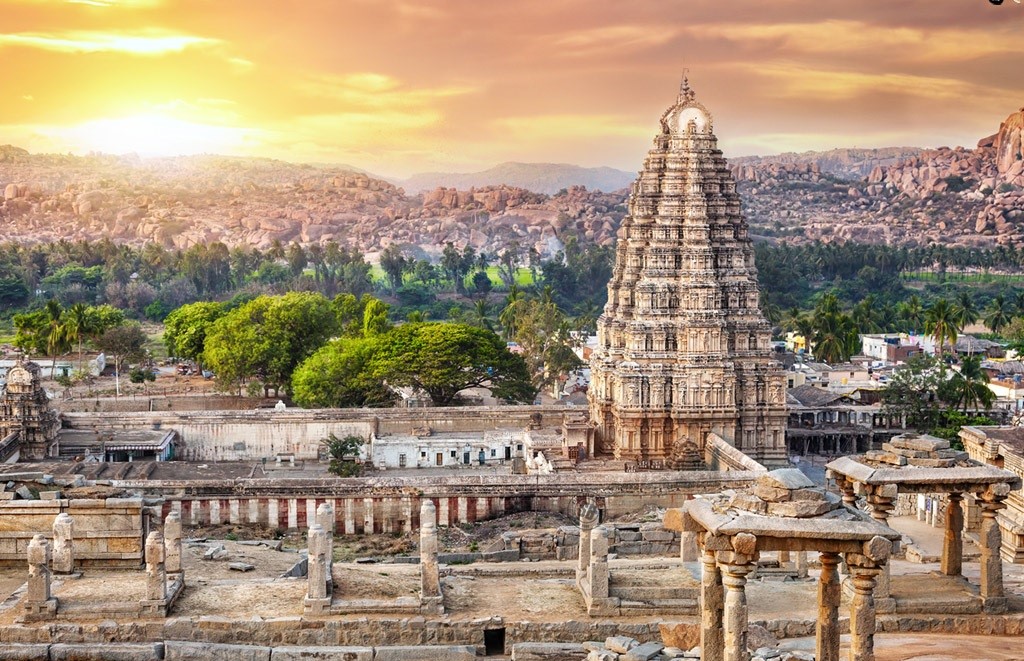
- Virupaksha Temple: One of the most beautiful and large temples of the empire is the Virupaksha temple. It gives a feeling of the richness of the architects and the efficiency of the artisans, even though it has been through so many invasions, it still holds its beauty in it.
What is Hampi lacking at present?
Even if we are quite proud to recollect the famous things from the “City of Victory”, we cannot ignore the glaring lack of amenities in and around Hampi today.
- First and the foremost, being a heritage site, the city lacks good infrastructure and its condition is pitiable with a severe lack of potable water and proper sanitation.
- Though a landmark in Indian history, it lacks conservation and preservation of its architectural aesthetics.
- Community oriented government approach towards both destination and regional development.
- The tourists visiting Hampi having disrespect for the heritage structures. Some have even gone as far as defacing the monuments just for candid purposes.
- The local people of Hampi lack knowledge regarding the tourism opportunities of the place.
Economic Corridors of Local Community in Hampi
- Homestay Start-ups
- Crafts shops
- Travel Facilitators
- Culinary Tourism
- Tour Guides
Evident since ages ago, Hampi is rich in its architecture and heritage. My article here tried to outline the challenges and gateways faced by Hampi’s economy and its stakeholders over the years. Still I believe that the legacy can be revived by empowering the operations and financial injections allocating for the overall development of Hampi. Apart from making it a history, why can’t we convert it a glorious present? It is important that the grand history and heritage of Hampi have to be preserved and that is a responsibility we have to undertake.

